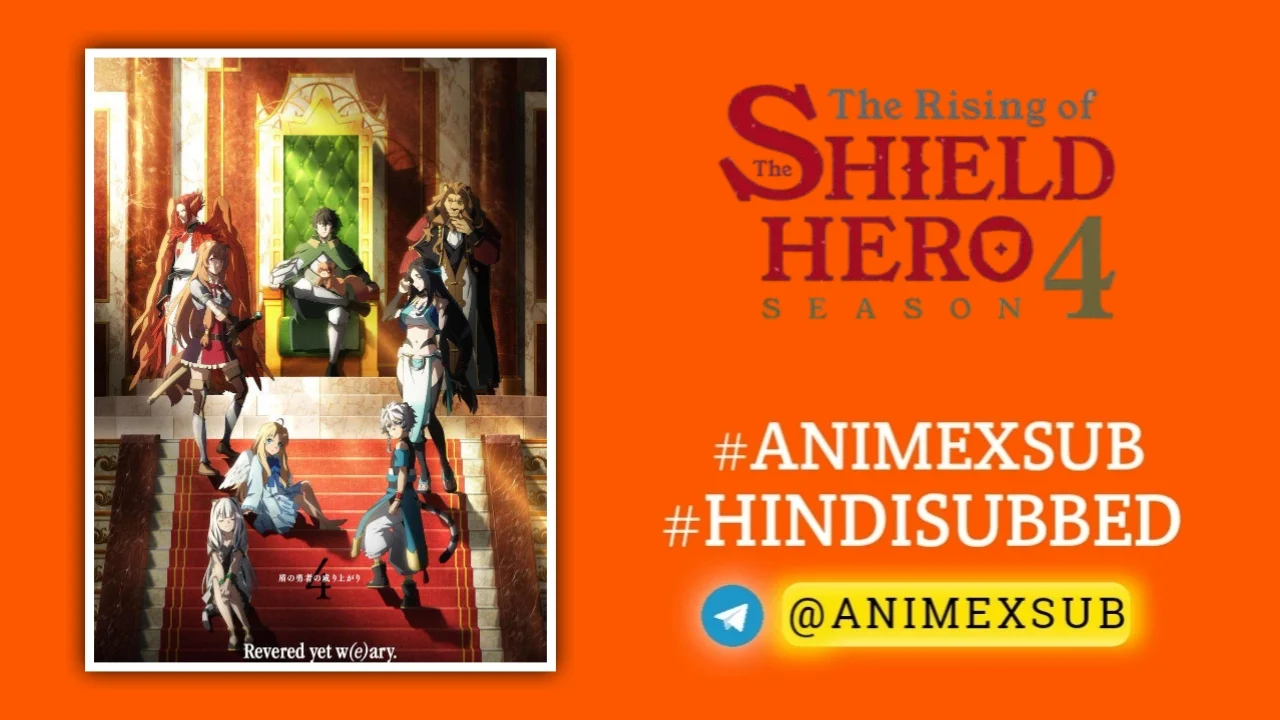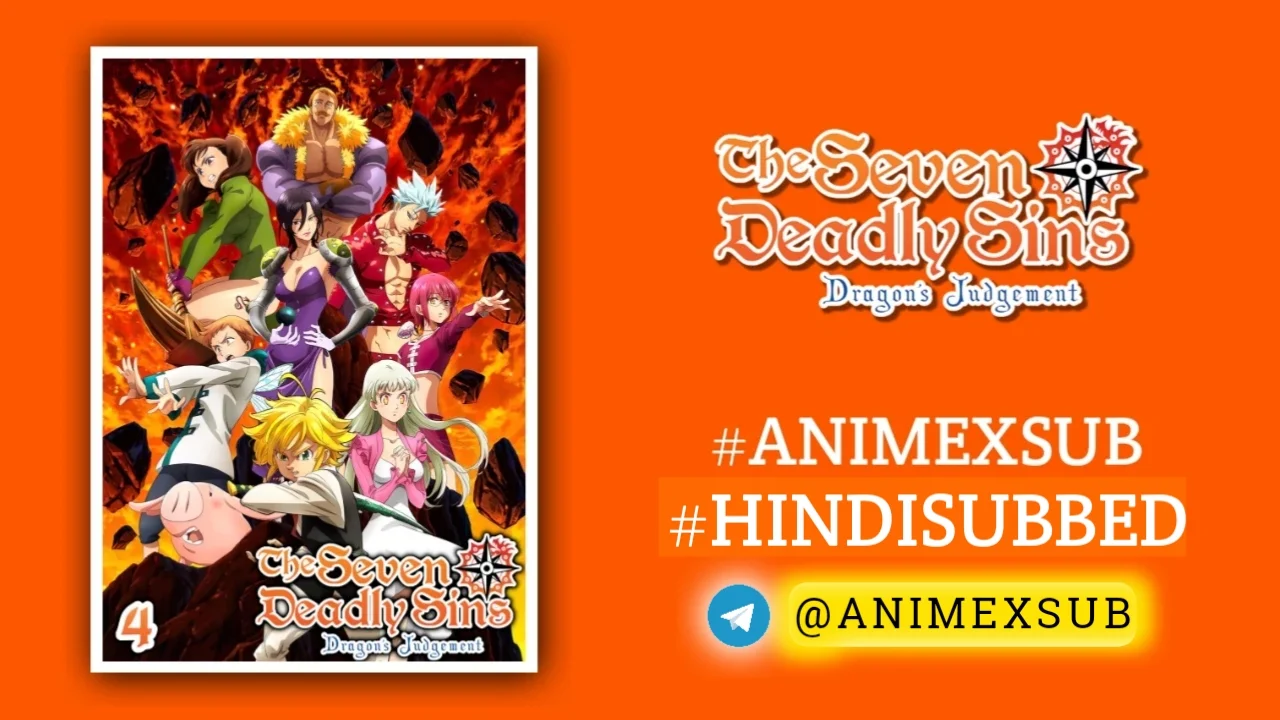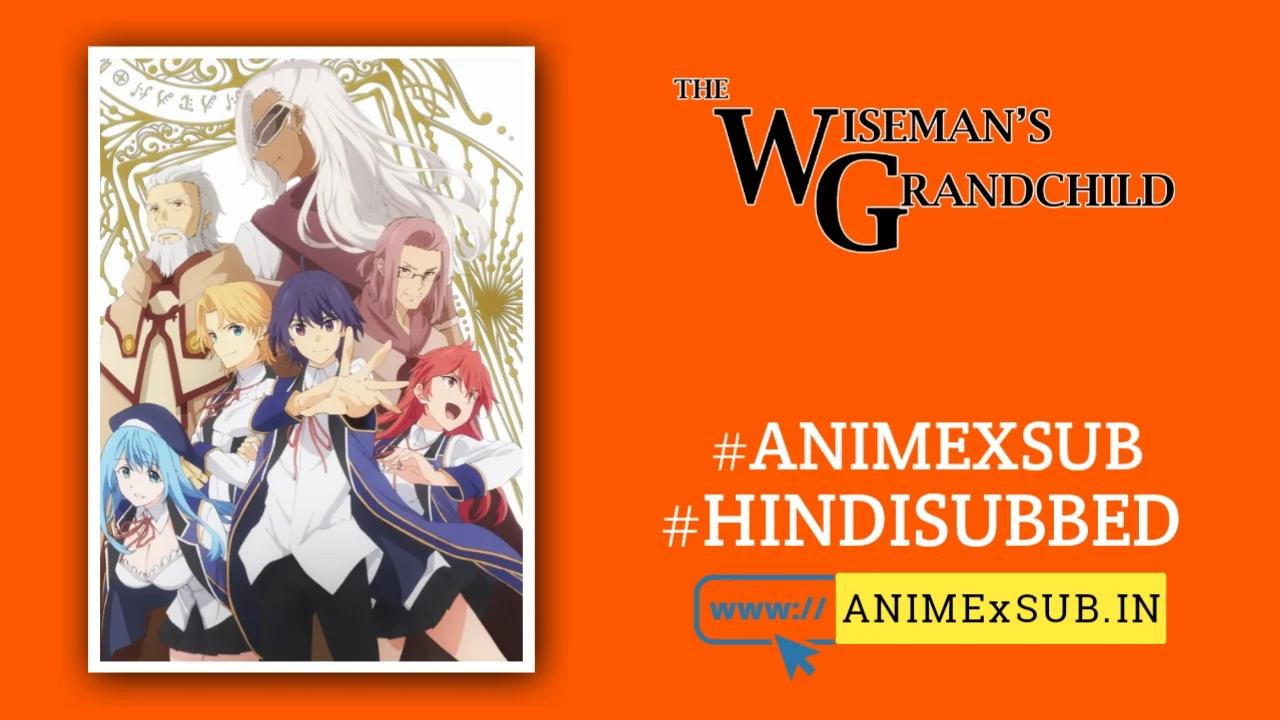
The Rising of the Shield Hero Season 4 Hindi Subbed [10/12] {Ongoing}

Tate no Yuusha no Nariagari Season 4
The Rising of the Shield Hero Season 4Synopsis
The fourth season of Tate no Yuusha no Nariagari. As Naofumi prepares for the Phoenix’s return, assassins from Q’ten Lo target Raphtalia, mistaking her for a throne usurper. To resolve the conflict, Naofumi journeys to Siltvelt, where he is hailed as a demi-human savior, but not all welcome him. In politically volatile Q’ten Lo, Raphtalia becomes a revolutionary symbol. Amid rising chaos, can Naofumi unite his allies and guide them to salvation? (Source: Crunchyroll News)
Watch Trailer
Characters
Episodes
How To Download Tutorial
The Rising of the Shield Hero Season 4: A Pinnacle of Isekai Maturity and Political Intrigue
Introduction: From Underdog to Unifier
In the ever-expanding landscape of isekai anime, The Rising of the Shield Hero (Tate no Yuusha no Nariagari) has long stood out for its unflinching portrayal of betrayal, resilience, and societal prejudice. Season 4, which premiered on July 9, 2025, on Crunchyroll, marks a decisive evolution. Adapting volumes 15-17 of Aneko Yusagi’s light novels, it thrusts Naofumi Iwatani into the heart of international diplomacy and revolutionary fervor, transforming the series from a personal redemption tale into a geopolitical saga. Directed by Hitoshi Haga at Kinema Citrus, this 12-episode cour—ending imminently as of September 11, 2025—delivers some of the franchise’s most layered storytelling, blending high-stakes action with nuanced explorations of identity and power dynamics.
What sets Season 4 apart is its refusal to recycle tropes. Where earlier seasons focused on Naofumi’s isolation and growth, this installment examines the ripple effects of his legend across nations, particularly through Raphtalia’s heritage. It’s a season that rewards long-time viewers with callbacks to subtle lore threads, like the demi-human undercurrents from Season 1, while introducing fresh conflicts that feel organically earned. As Episode 10 (“Prayer”) aired on September 10, the narrative reaches a fever pitch, forcing characters to confront the cost of peace in a world teetering on war.
Plot Breakdown: Navigating Thrones, Assassins, and the Phoenix’s Shadow
Season 4 picks up directly from Season 3’s cliffhanger, where Naofumi unites the Cardinal Heroes against the impending return of the Phoenix, one of the Four Guardian Beasts. But the real catalyst is a misunderstanding: assassins from the isolationist empire of Q’ten Lo target Raphtalia, mistaking her for a usurper to their throne due to her royal lineage. This propels Naofumi’s party to Siltvelt, a demi-human nation that reveres him as a messianic figure, kicking off the Siltvelt Succession Arc.
The arc unfolds in three acts. Early episodes establish the political powder keg: Siltvelt’s internal factions vie for control amid racial tensions, with Naofumi caught between idolization and exploitation. New representatives Werner (voiced by Takeo Otsuka) and Jaralis (voiced by Jiro Saito) flank Naofumi in key visuals, symbolizing uneasy alliances between beast tribes. As Naofumi brokers a succession crisis, Raphtalia’s subplot in Q’ten Lo ignites a revolution; her image as a symbol of change spreads virally among the oppressed, drawing parallels to real-world insurgencies.
Mid-season escalates with the Phoenix’s awakening, forcing a temporary hero convergence. Unlike prior Waves, this beast demands not just brute force but strategic pacts, highlighting Naofumi’s evolved shield arsenal—now incorporating curse series upgrades for offensive bursts without compromising his defensive core. Episode 8’s layout-heavy battle sequences, animated with fluid 3D integration by Kinema Citrus, showcase Naofumi’s growth: he deploys a “Soul Eater Shield” variant to absorb phoenix flames, turning environmental hazards into countermeasures.
By Episode 10, the stakes personalize. Raphtalia grapples with her “Mandate of Heaven”—a divine blessing positioning her as Q’ten Lo’s potential emperor—while Naofumi faces moral quandaries over intervening in foreign sovereignty. Subplots weave in supporting cast depth: Filo’s maturation into a diplomatic envoy adds levity, and Rishia’s analytical skills shine in decoding ancient prophecies. The season hints at the Heavenly Emperor Arc’s fringes, introducing Zodia, a enigmatic lost girl whose origins tie into interdimensional lore, potentially bridging to future volumes.
This adaptation shines in its fidelity to the novels’ themes of cultural clash. Siltvelt’s reverence for Naofumi mirrors colonial savior complexes, critiquing how heroes become tools in larger narratives. Assassination attempts evolve from personal threats to ideological warfare, with Q’ten Lo’s emperor embodying rigid tradition against Raphtalia’s progressive ideals. It’s a bold pivot, emphasizing dialogue over endless combat, though action peaks deliver visceral payoffs—like a throne-room showdown in Episode 9 that blends political maneuvering with explosive magic.
Production Excellence: Animation, Music, and Technical Mastery
Kinema Citrus elevates its game here, addressing past criticisms of Seasons 2 and 3’s inconsistent pacing. Haga’s direction emphasizes dynamic camera work, with Episode 8’s cuts—handled by external studios like Chrono9—using 3D models for expansive landscapes that evoke the novels’ scale. Character designs by Franziska van Wulfen, Sana Komatsu, and Masahiro Suwa refine expressions for emotional subtlety; Raphtalia’s evolving Miko attire symbolizes her internal conflict, rendered with intricate fabric physics.
The soundtrack, composed by Kevin Penkin with contributions from Alfredo Sirica and Natalie Jeffreys, is a standout. The opening “Resolution” by Madkid pulses with orchestral swells during succession battles, while Chiai Fujikawa’s ending “Eien ni Ikkai no” (Eternally Once) layers ethereal vocals over reflective montages, underscoring themes of fleeting alliances. Insert tracks, like Asami Seto’s reprise for Raphtalia, heighten revolutionary scenes, creating an auditory tapestry that feels more cinematic than prior seasons.
Voice acting remains a pillar. Kaito Ishikawa’s Naofumi matures from cynical snarls to measured authority, while Asami Seto’s Raphtalia conveys quiet resolve amid turmoil. Newcomers Otsuka and Saito add gravitas to beast representatives, their gravelly tones contrasting the heroes’ youth. The English dub, simulcast on Crunchyroll, features Billy Kametz’s successors in seamless transitions, preserving emotional weight.
Character Development: Depth Beyond the Harem Label
Season 4 dismantles the “harem” misnomer plaguing the series. Naofumi’s relationships evolve into mutual dependencies: his bond with Raphtalia deepens through shared cultural burdens, culminating in a pivotal Episode 10 confession that redefines their partnership without romantic clichés. Filo’s innocence tempers the group’s cynicism, her filolial form enabling stealth reconnaissance that influences plot turns. Even sidelined heroes like Ren and Itsuki get redemption arcs, contributing to Phoenix strategies with tactical insights.
Raphtalia’s arc is revolutionary gold. No longer just Naofumi’s sword, she embodies agency—negotiating with Q’ten Lo rebels and questioning her demi-human identity. This mirrors broader series growth: Naofumi confronts his savior complex, recognizing how his shield’s “weakness” fosters empathy over dominance. Supporting characters like Sadeena gain nuance; her flirtatious facade cracks to reveal maternal protectiveness, though one early episode’s handling draws minor fan critique for overemphasizing fanservice.
Antagonists elevate the narrative too. Q’ten Lo’s emperor isn’t a cartoonish villain but a product of insular dogma, his assassins driven by prophecy rather than malice. This humanizes conflicts, making victories bittersweet—peace in Siltvelt comes at the cost of Naofumi’s impartiality.
Reception and Cultural Impact: A Resurgent Masterpiece
As of September 11, 2025, with Episode 10 fresh, Season 4 has revitalized the fandom. MyAnimeList scores hover at 8.2/10, praising its political maturity, though some decry the 12-episode constraint for rushing the succession climax. On X (formerly Twitter), discussions buzz around Raphtalia’s “Mandate of Heaven” symbolism, with fans drawing parallels to historical figures like Joan of Arc. Reddit threads in r/shieldbro hail it as the “best adaptation yet,” citing improved pacing over Season 3’s Spirit Turtle slog.
Critically, it’s lauded for subverting isekai fatigue. Where peers like Re:Zero lean on psychological torment, Shield Hero Season 4 opts for systemic critique—demi-human oppression echoes real-world marginalization, amplified by Naofumi’s outsider lens. Global viewership on Crunchyroll spikes 40% from Season 3, per unofficial metrics, underscoring its appeal amid 2025’s crowded Summer slate (competing with Dandadan and Kaiju No. 8).
Fan reactions highlight emotional resonance: Posts celebrate Raphtalia’s spotlight, with one viral thread calling it “the season the characters deserved.” Minor gripes include occasional 3D stiffness in crowd scenes, but overall, it’s a bounce-back triumph, proving the series’ longevity.
Thematic Resonance: Power, Prejudice, and the Weight of Legacy
At its core, Season 4 interrogates heroism’s burdens. Naofumi’s shield, once a curse, becomes a metaphor for defensive diplomacy—absorbing blows to enable negotiation. The Siltvelt arc dissects fanaticism: worship of the Shield Hero fuels division, forcing Naofumi to dismantle his own myth. Raphtalia’s journey critiques inherited trauma, her royal blood a double-edged sword in a world valuing purity over progress.
In a post-2020s context, these elements feel prescient. Q’ten Lo’s isolationism parallels global nationalism, while the Phoenix’s chaos evokes climate crises demanding collective action. The season avoids preachiness, letting actions speak—Naofumi’s refusal to claim Siltvelt’s throne underscores humility as true strength.
Conclusion: Why Season 4 Redefines the Franchise
The Rising of the Shield Hero Season 4 isn’t just a continuation; it’s a reinvention. By shifting from survival to statesmanship, it cements Naofumi’s arc as one of isekai’s most compelling. With the cour wrapping soon, it leaves threads dangling—the Phoenix’s full rampage, Zodia’s mysteries—teasing more. For newcomers, it’s accessible via Crunchyroll recaps; for veterans, it’s vindication. In an genre bloated with power fantasies, this season reminds us: the mightiest shield guards not just the body, but the soul of a fractured world.

























